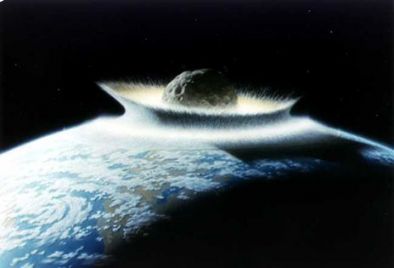The software, Neo-Impactor, was designed specifically to simulate an asteroid impact. It allows scientists to estimate the impact of asteroids with a diameter of less than a kilometer

The software, Neo-Impactor, was designed specifically to simulate an asteroid impact. It allows scientists to estimate the impact of "small" asteroids - "small" refers to those with a diameter of less than a kilometer. Early results show that the ten countries facing the greatest risk are China, Indonesia, India, Japan, the USA, the Philippines, Italy, the UK, Brazil and Nigeria.
"The threat of an asteroid hitting the Earth is accepted today as the most devastating natural disaster facing humanity," says Nick Bailey, one of the researchers and developers of the software.
"The consequences for the human population and for the infrastructure as a result of damage are enormous," continues Bailey. "A hundred years ago, a remote area near the Tungaska River witnessed the largest asteroid impact in recorded history, when a relatively small object (about 50 meters long) exploded in the sky.
According to Wikipedia: "Asteroids with a diameter of one kilometer hit the Earth several times at intervals of a million years. Collisions with objects with a diameter of 5 kilometers occurred about once every ten million years. In 1908, the Tongska explosion, weighing 20 megatons of TNT, was caused by an object 20 meters in diameter. Small collisions, weighing thousands of tons of TNT, occur several times each month.
Since 1998, a catalog of all asteroids that are larger than a kilometer in diameter and are in the vicinity of the Earth has been compiled by the international research of Space-Guard - however, the smaller, undetected and more frequent asteroids, whose diameter does not exceed a kilometer, are the ones that pose a great risk less.
Bailey emphasized that the goal was to learn about the impact of the small asteroids on global economies, structural infrastructure and human casualties and how to begin to address them. "The results mark the countries that are under the greatest threat from the natural disaster and the nationalities that should be involved in dealing with the threat." And if that doesn't get everyone to sit down and cooperate, we don't know what will.

9 תגובות
Or shows that such an occurrence is at a higher level of probability than you think!!
Have you ever been stuck without suitable words? It happens to me almost every day, except that I don't have to publish an article at a given time!
A little consideration won't hurt..we all look ridiculous at some point..the main thing is the intention and I actually understood it!
"It shows that the possibility of such an occurrence is not so far off."
Why not just say
"It shows that the possibility of such an occurrence is not so improbable."??
to Ilan-
Basa, how long do we have left Doc?
good work
Sakhtein will channelize wasted talent in the economy...
Yael you played her!!!
To 1: That's not what was said, and it's not true either!
As someone who deals a little with the subject, the criteria for "high risk" derive from the following elements:
1. A large area of the country = a large chance of direct damage to the country itself.
2. Length of beaches/relation to the area = the more beaches there are, the country is exposed even if the damage is to the sea next to it, and not only to it itself.
3. Concentration/dispersion of the population = the more density there is in total, or very large concentrations of population, the higher the damage to human life.
4. Technological level = the higher it is, the damage to infrastructure/communication/transport can be reduced (as well as other damages).
5. Established and efficient governing systems = the highest risk in such situations is "loss of control" and socially returning to the situation of "every Dalim is a man".
Because of at least some of these parameters (population density among the highest in the world, a long coast, population concentrations), and also because of other elements such as: hostile neighboring countries, lack of effective land connection with the immediate environment, a seismically and geothermally dangerous area, Israel is indeed at risk Very high, or: a not very big hit, or even an indirect but close one, is enough to cause very massive damage.
What a beauty, it won't hurt Israel...